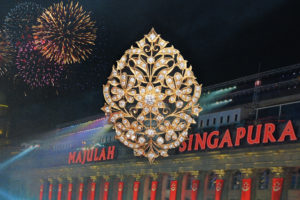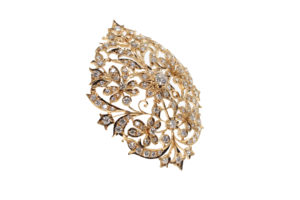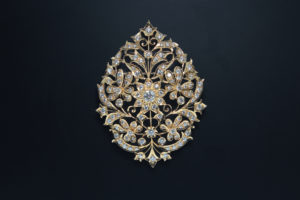
2020 has not been a kind year to Singapore, or to Foundation Jewellers as well, and it looks as though the rest of the year may continue to not be kind as well. So even as Singapore’s National Day looms closer on the horizon, one might choose to ask, what is there to celebrate? A short moment of light will do nothing in a valley of darkness.
Yet it is because something is fleeting and transient, that gives it a level of sentimental value and importance. That is why we find beauty in flowers, even though they may wither. That is why we find magnificence in fireworks, even though they may fade instantly. Of course, the opposite is true as well; what ultimate value is there in something that does not last?

The Peranakan Firework Flora Pendant then, is an amalgamation of those conflicting theses, mixed in with the wishes of our chief designer for his beloved homeland, Singapore. The Chinese word for firework is “烟花” (lit. smoke flowers). Our chief designer thus chose traditional Peranakan flowers such as the ixora and the rose for a motif, thus using the ephemeral flora to depict the fleeting fireworks in the sky.
Despite using these symbols of transient joy and impermanent beauty, the crux of his heart’s desire comes in using the materials from which the pendant is crafted: gold and diamonds. Diamonds are almost as old as the earth itself, while gold is said to be used in even heavenly realms by many religious texts. This marriage of contradictions, where the ephemeral is given substance by the eternal, betrays our chief designer’s wishes: that Singapore will continue to find and draw strength from these moments of joy and beauty, until the end of time itself.

Foundation Jewellers would like to wish Singapore and all our fellow Singaporeans a joyful and prosperous 55th National Day.
